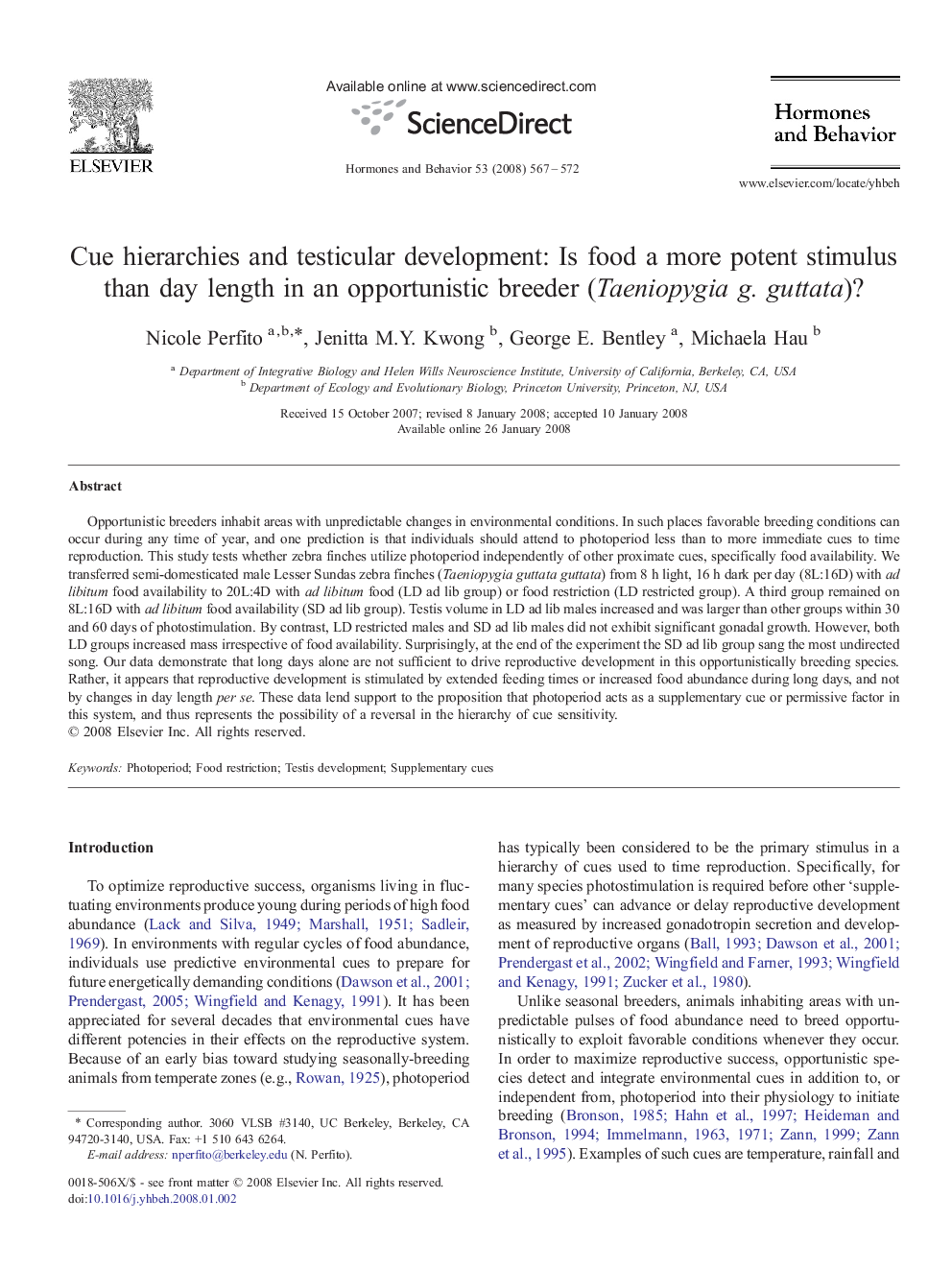| کد مقاله | کد نشریه | سال انتشار | مقاله انگلیسی | نسخه تمام متن |
|---|---|---|---|---|
| 323277 | 540541 | 2008 | 6 صفحه PDF | دانلود رایگان |

Opportunistic breeders inhabit areas with unpredictable changes in environmental conditions. In such places favorable breeding conditions can occur during any time of year, and one prediction is that individuals should attend to photoperiod less than to more immediate cues to time reproduction. This study tests whether zebra finches utilize photoperiod independently of other proximate cues, specifically food availability. We transferred semi-domesticated male Lesser Sundas zebra finches (Taeniopygia guttata guttata) from 8 h light, 16 h dark per day (8L:16D) with ad libitum food availability to 20L:4D with ad libitum food (LD ad lib group) or food restriction (LD restricted group). A third group remained on 8L:16D with ad libitum food availability (SD ad lib group). Testis volume in LD ad lib males increased and was larger than other groups within 30 and 60 days of photostimulation. By contrast, LD restricted males and SD ad lib males did not exhibit significant gonadal growth. However, both LD groups increased mass irrespective of food availability. Surprisingly, at the end of the experiment the SD ad lib group sang the most undirected song. Our data demonstrate that long days alone are not sufficient to drive reproductive development in this opportunistically breeding species. Rather, it appears that reproductive development is stimulated by extended feeding times or increased food abundance during long days, and not by changes in day length per se. These data lend support to the proposition that photoperiod acts as a supplementary cue or permissive factor in this system, and thus represents the possibility of a reversal in the hierarchy of cue sensitivity.
Journal: Hormones and Behavior - Volume 53, Issue 4, April 2008, Pages 567–572